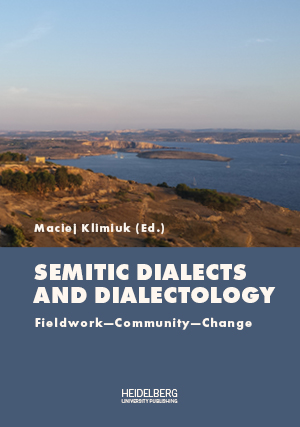Zitationsvorschlag
Lizenz (Kapitel)

Dieses Werk steht unter der Lizenz Creative Commons Namensnennung - Nicht-kommerziell - Weitergabe unter gleichen Bedingungen 4.0 International.
Identifier (Buch)
Veröffentlicht
The Expression of Possession in the al-ʕAwābī District (Northern Oman)
Arabic dialects show different ways of expressing possession and ownership. Generally, two main constructions are used: the construct phrase (or synthetic genitive, known in Arabic as iḍāfa), that links together two nouns in a relationship of possessor and possessed, and the analytic genitive, which uses
genitive exponents to express possession or relationship between two nouns. Eksell Harning’s work (1980) is an extensive comparative study of possessive linkers in many different Arabic dialects. However, the sources the author used for Oman were Reinhardt (1894) for the northern part of the country, and Rhodokanakis
(1908) for Dhofar (south Oman). More recent studies, including the one by Davey (2016) on Dhofari Arabic, show different behaviour of genitive exponents in both areas. In the al-ʕAwābī district (northern Oman), two main genitive exponents are used, namely māl and ḥāl, indicating two different types of genitive relations.
In this paper, I will outline the syntactic use and occurrence of the analytic genitive compared to the synthetic one in the vernacular of the al-ʕAwābī district, which appear to be different from Reinhardt’s study (1894) and from other Omani varieties. The analysis presented here takes into consideration a cross-dialectal
approach and uses data that have been collected during three months of fieldwork in the area, through free speech recordings and direct questions to informants.
Keywords Omani Arabic, Arabic dialectology, syntax, possessive constructions, field research






